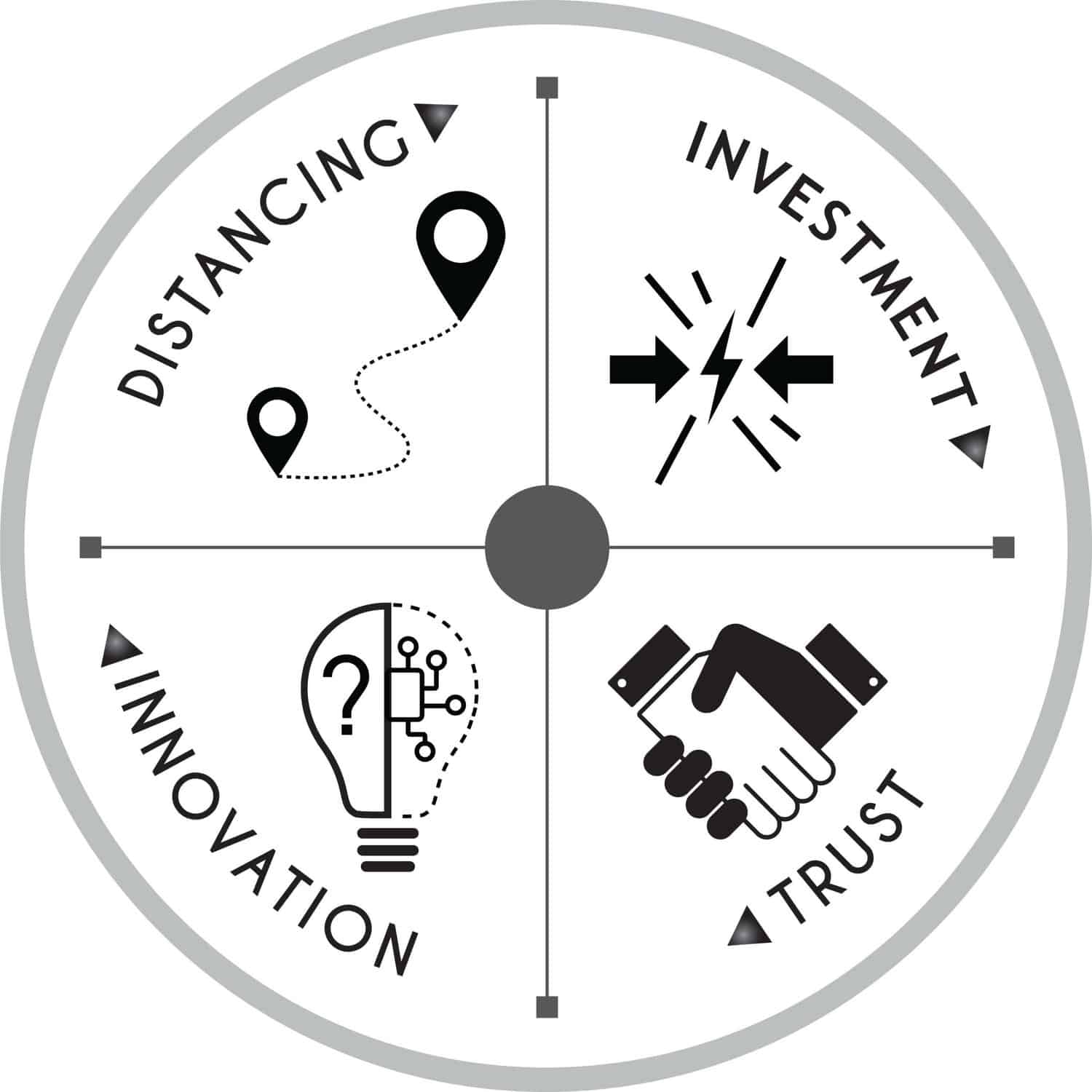The decision to stay stuck and allow the pain to be experienced is counterintuitive. Yet, it is often the most direct and effective way to get sustained relief. If feeling anxious or depressed, you might be better served by asking why instead of medicating yourself back to ‘normal.’ Likewise, when teams struggle, the urge to make it better can block the path to the hard work that needs to be done. If the goal is to eliminate discomfort, evolving as a team is nearly impossible.

It’s time to play red-light green-light. Let’s look at four scenarios. These are the most common situations that get teams stuck (red light) and the issues that need to be tackled before moving forward (green light). Begin in the upper left quadrant.

Distancing: There has been a significant change. A project failed. A key player was lost to the team. The rules were rewritten. Specific issues have to be addressed before the team forges ahead.
- The loss has to be acknowledged and, for all intents and purposes, grieved.
- The depletion caused by the loss necessitates time to allow for recuperation. The team needs to refuel.
- The new circumstances have to be defined. Everyone’s buy-in is required.
Investment: The team’s situation is new. New players. New rules. New goals. Specific issues have to be addressed before the team forges ahead.
- The team needs to reset norms and rules of engagement.
- Everyone needs to be aligned with the mission, the direction they’ll travel together, and the role they’ll play on the team.
- Allowance must be made for as many paths to that common destination as necessary.
Trust: Collaboration is only possible when the team environment is safe and the platform supporting everyone is sturdy. Because teams are populated by humans and humans come in countless personality types, trust is easy to compromise in both big ways and small. Specific issues have to be addressed before the team forges ahead.
- A commitment to respect must be shared. This is easy when there is no stress in the environment. When you add stress to the team’s equation, coping skills tend to break down and some teammates are at risk for disengagement or bad behavior.
- Flawless accountability ensures both follow-through on commitments and alignment with team values in the form of not just words, but actions.
- Harness the energy that arises from connection. A trusting environment brings teammates closer together and powers collaboration.
Innovation: Solving complex problems when there are new teammates and unprecedented challenges requires the same skill sets that fuel inventors. Turning things upside-down and inside-out requires understanding that failure is a likely outcome. Failure must be seen as an asset to the team. Specific issues have to be addressed before the team forges ahead.
- The appreciation for the value of differences that was built into the team’s infrastructure in the investment phase can now be unleashed. There are many paths to the same destination.
- Some of the paths might include risk. Ensure the risk is smart by running it through the filter of team norms and goals.
- Accept the inevitability of change. The choice to innovate means the team is altering the environment in reaction to the environment’s impact on the team.
There is probably a yellow light in the red-light green-light game. The team doesn’t have to come to a full stop to take care of these issues. Just slow down enough to ensure the health and wellness of the team at whatever stage of the cycle you’re in. When you are in ‘yellow,’ ask these questions:
- In what stage of the cycle is our team?
- Why are we in this stage?
- What actions should we take in order to move forward?
Green light!

